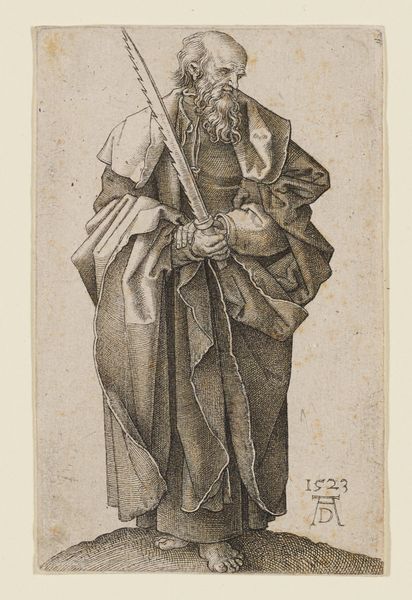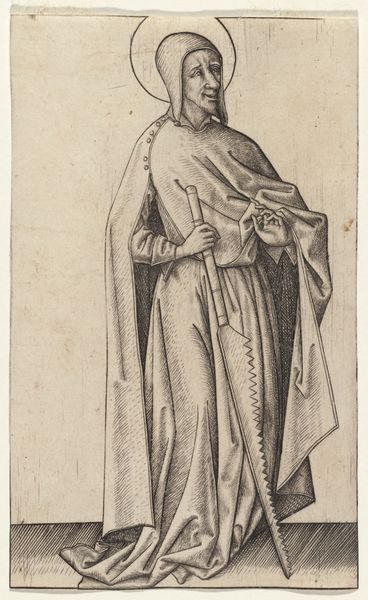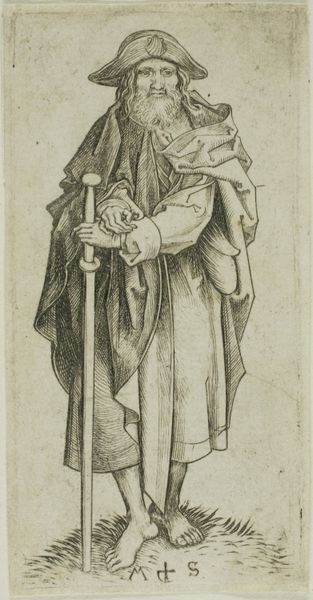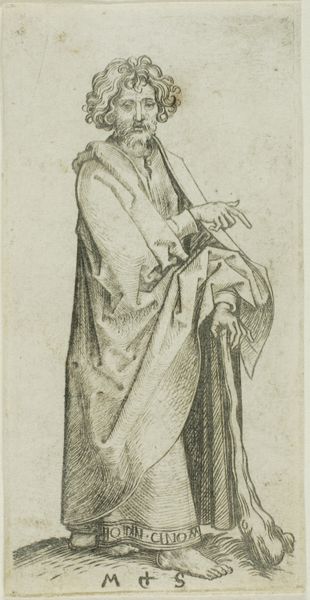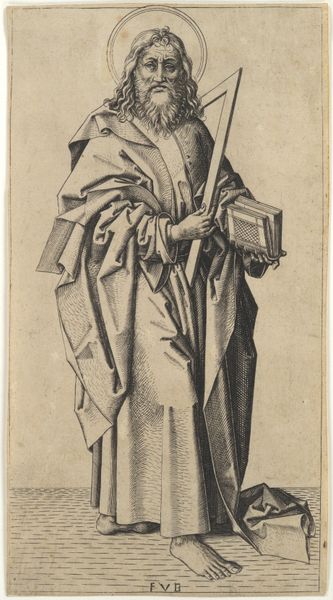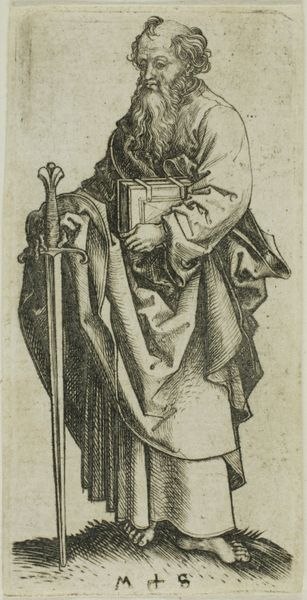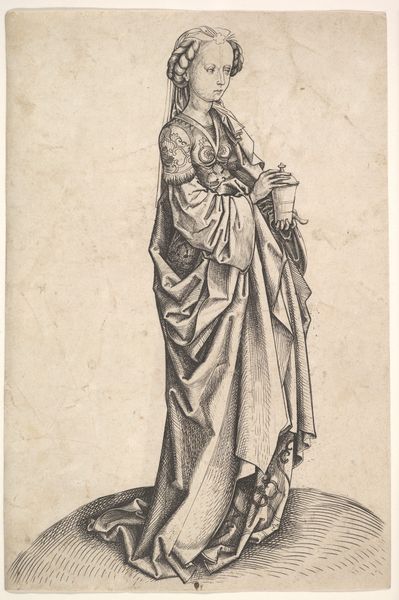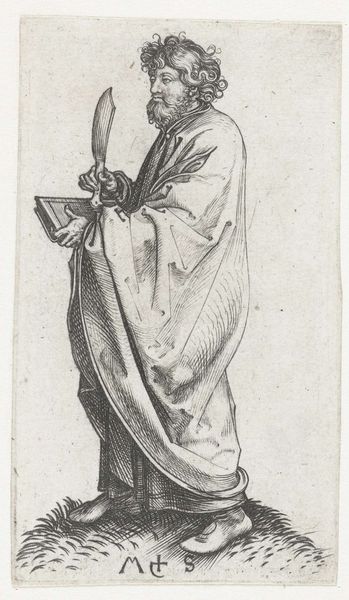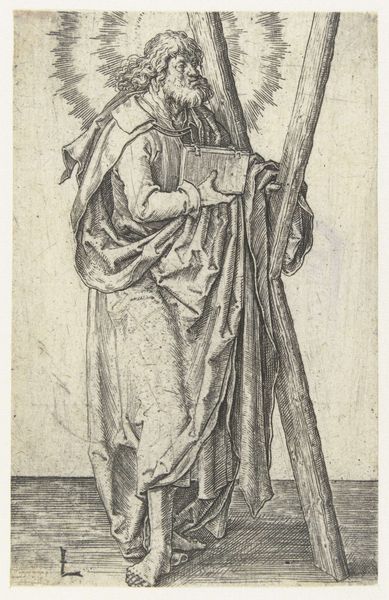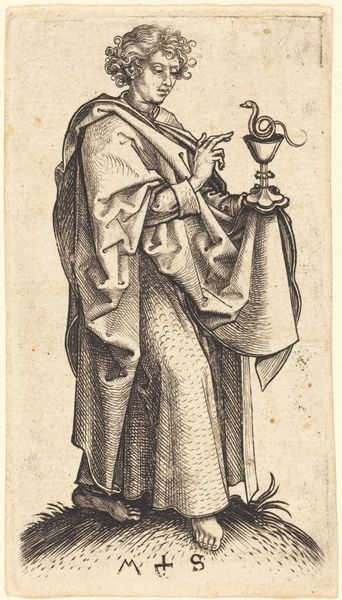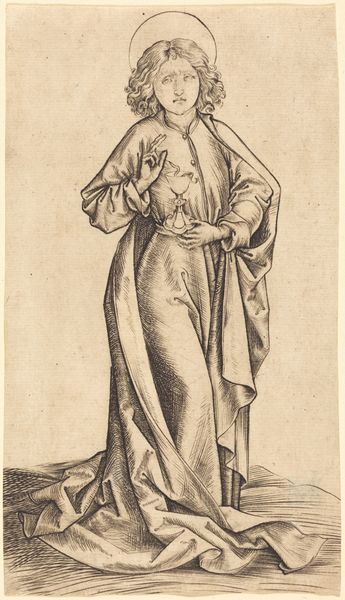
drawing, print, engraving
#
portrait
#
drawing
# print
#
figuration
#
northern-renaissance
#
engraving
Dimensions: Sheet: 4 5/8 × 2 15/16 in. (11.7 × 7.5 cm)
Copyright: Public Domain
Curator: Here we have Albrecht Dürer's "Saint Simon," an engraving dating to 1523. It resides here at the Metropolitan Museum of Art. Editor: The somber mood strikes me first. Look at the figure's lowered gaze and the sheer weightiness of his robes, rendered with such precise line work. Curator: Dürer, particularly in his printmaking, was meticulous. Engraving, as a process, involves the artisan physically cutting into a metal plate, usually copper, to hold ink, then pressing it to paper. Each line demanded intention. Consider also how printmaking democratized art production and distribution at that time. Editor: Indeed. Speaking of lines, notice how Dürer uses hatching and cross-hatching to build depth and shadow, particularly in the drapery and around the saint's face, drawing your eye to his expression. The saw is almost unnervingly sharp, and it guides your eye upwards to Simon’s intense expression. Curator: That saw, his attribute, speaks volumes about the material conditions surrounding artisanal labor and craft during the Northern Renaissance. Religious iconography became increasingly intertwined with representations of the tools of various trades and guilds. We understand that Simon was martyred by being sawn in half. Editor: The composition certainly reflects that stark reality. Simon dominates the picture plane, the texture created by the medium highlighting every fold, every hair. Dürer makes exceptional use of a monochrome palette to communicate light and mass. Curator: Yes, Dürer elevates a traditionally "lower" art form, the print, through this dedication to craftsmanship. The print became not just a way to reproduce, but a statement on production itself. Editor: It leaves you to ponder the symbolic relationship between faith and physical hardship. Even the smallest details, like the feet visible under his robes, make his humanity so compelling. Curator: Looking closely, the act of making and distributing images also helped propagate Reformation ideas in this era, adding to an understanding of craft as not being separated from society’s issues. Editor: Quite right. I am moved to note that Dürer’s virtuosity creates such a tangible emotional weight through this seemingly simple figuration. It truly captures a particular historical period. Curator: A beautiful synthesis of craft, labor, and faith expressed so efficiently and yet in such exquisite detail.
Comments
No comments
Be the first to comment and join the conversation on the ultimate creative platform.
